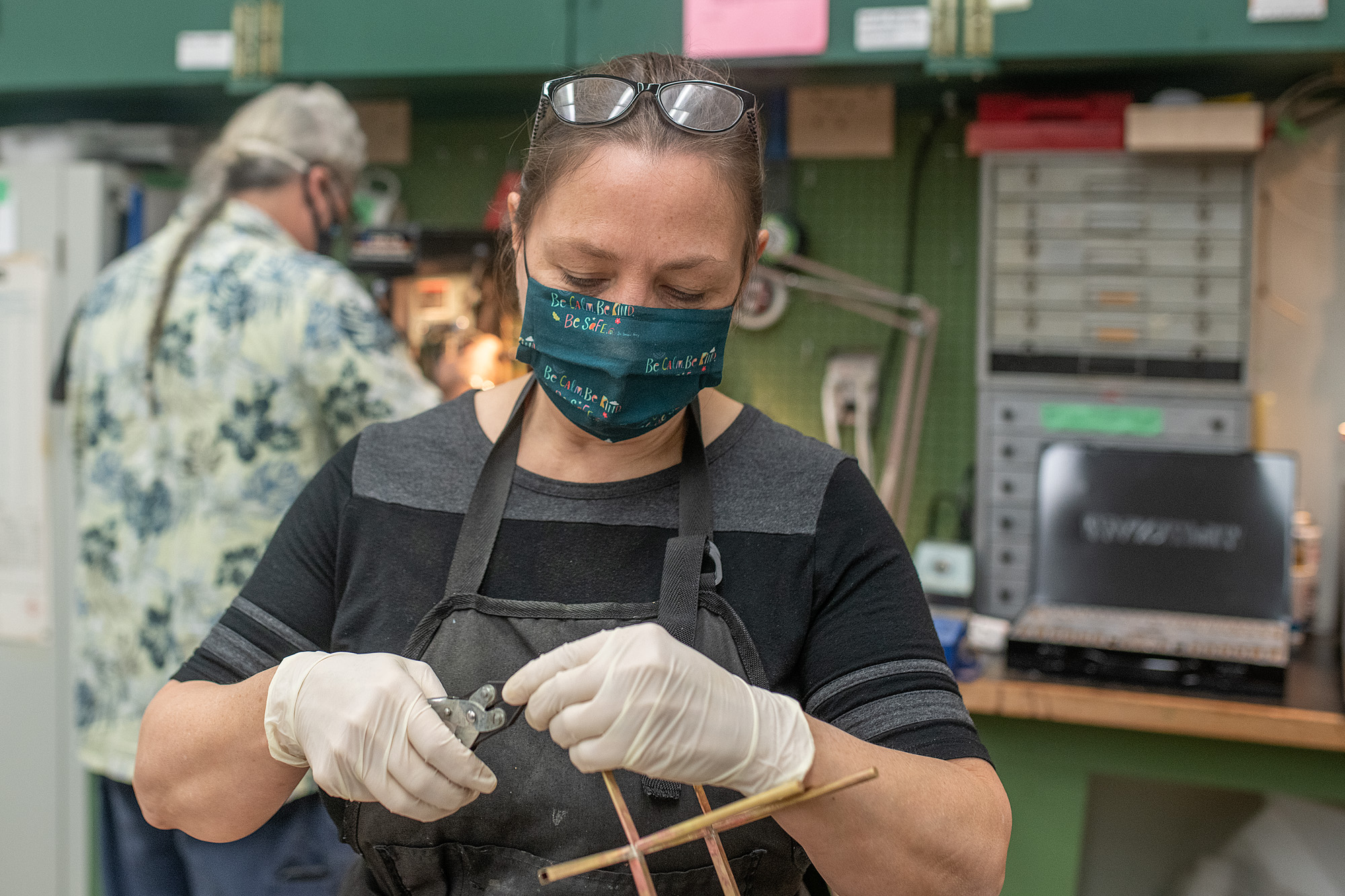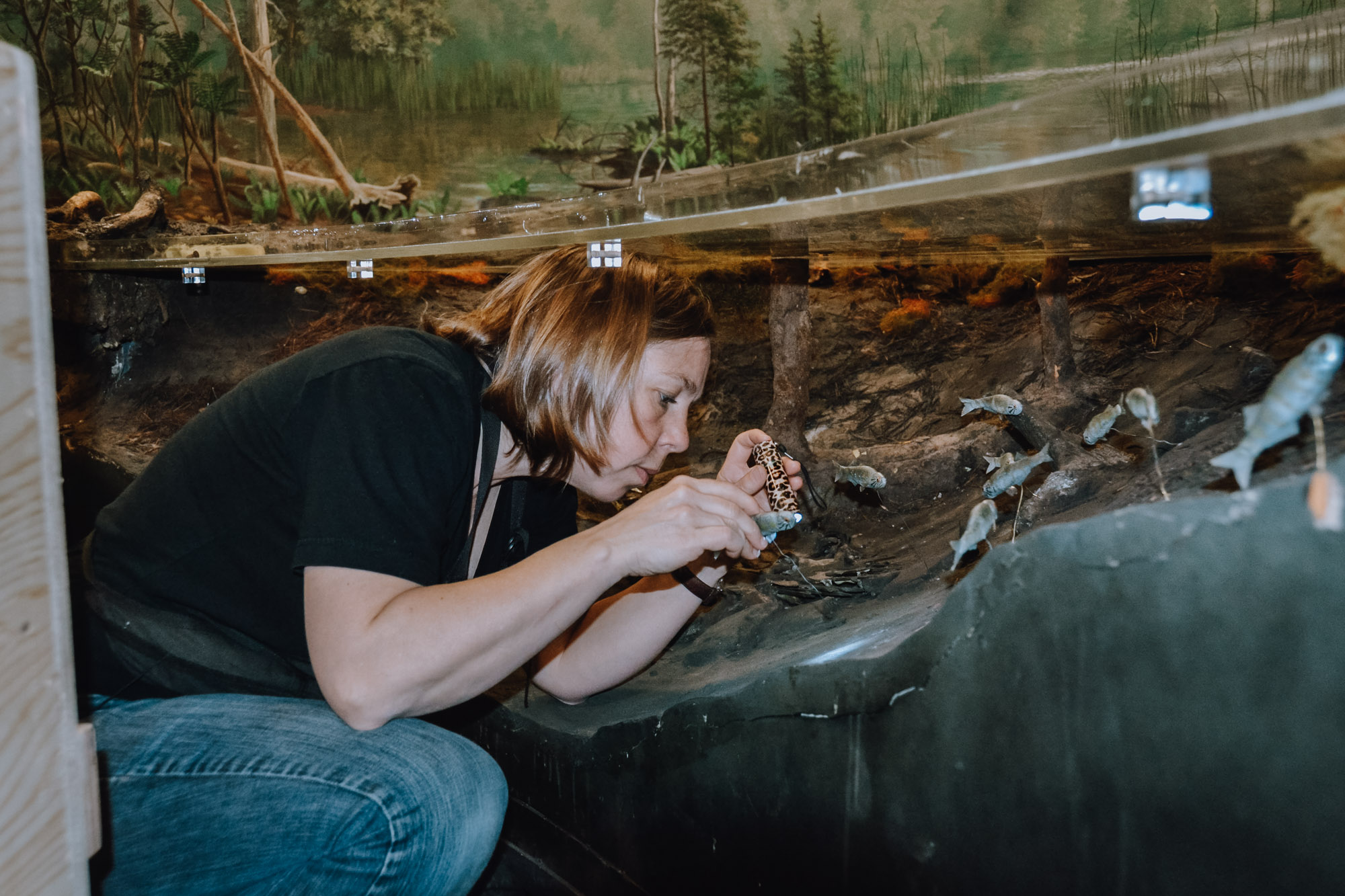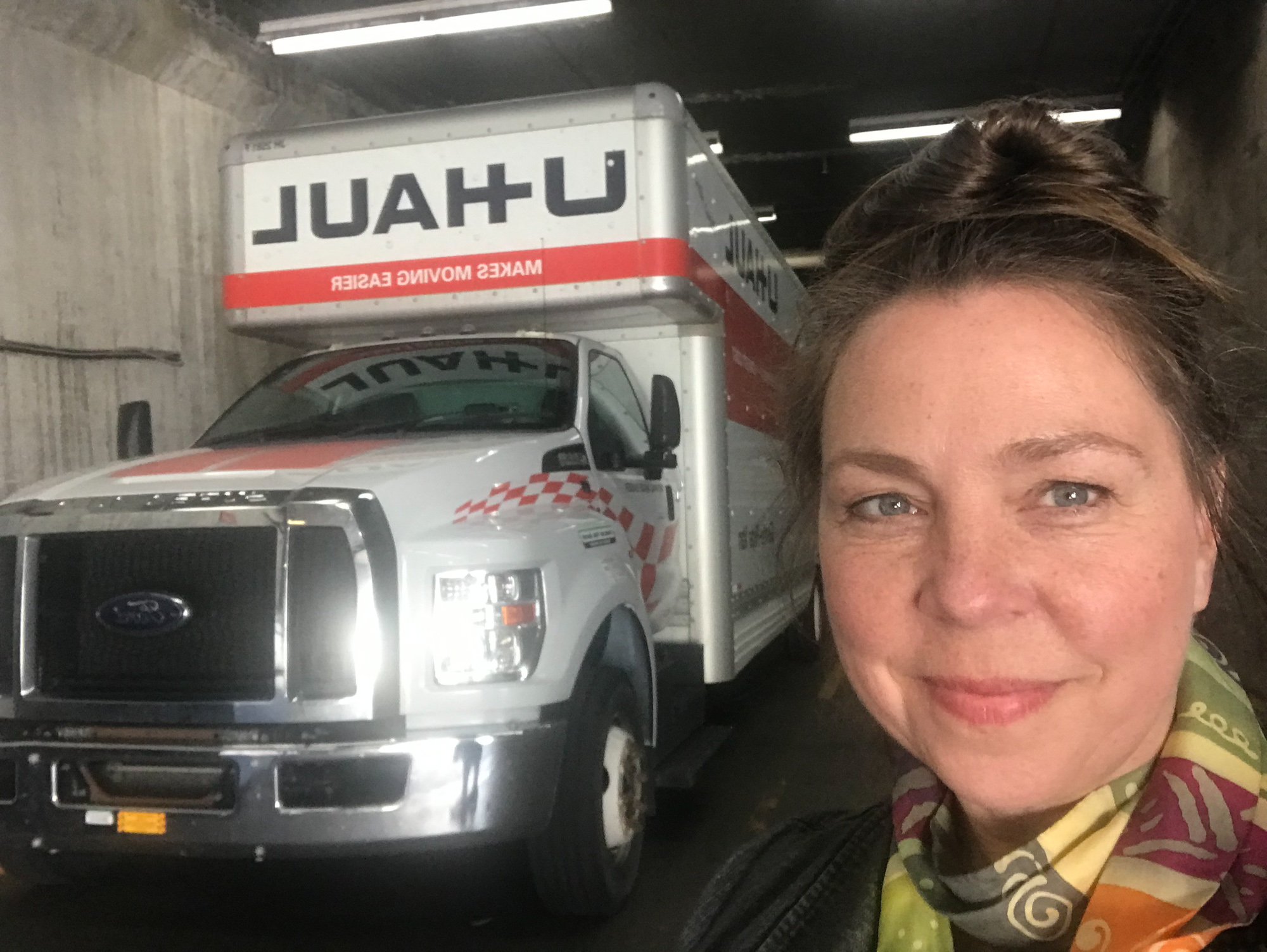
Modernization
Learn more about government’s intention to modernize the museum to protect our historic holdings and provide better access to our collections.

Sometimes a person seems so perfectly suited for a job that it’s like it was made for them. This is the case with Kate Kerr, one of the Royal BC Museum’s Exhibition Fabrication Specialists.

A 15-year veteran of the museum, Kerr is the heart and soul of the travelling exhibition program, more often than not, serving as a one-woman show, packing, moving, assembling, and troubleshooting these portable exhibits across the province. A position where community engagements meets art and metal work, exhibition fabrication requires out-of-the-box thinking, long hours on the road, and someone who isn’t afraid to get their hands dirty.
Kerr says the road she took to get to her current role is “weird, like [it was for] most of us at the Royal BC Museum.”
The New Brunswick native holds degrees in English and History, a fine arts degree in metal work, and a Masters in Community Development.
“When they were looking for an exhibits fabricator, they were looking for someone who has a bit of background in fine arts, history, somebody who could do metal work, somebody who could hang art — I used to own an art gallery in New Brunswick — so I had the background,” she says, in what is likely the biggest understatement of this interview.

While the travelling exhibition program isn’t new it has become of increasing importance as the Royal BC Museum seeks to become more accessible to people throughout the province.
Travellers, as they’re known, are sometimes offshoots of a larger exhibition that highlight a story within the larger story or provide a higher-level look at a more in-depth exhibition.
“We have a bigger exhibit that we design in house, together with partners, and then there’s smaller components from it that become a travelling exhibit,” explains Kerr. “From Gold Rush, we had Gold Mountain Dream, which was on the Chinese experience during the gold rush here in BC.” Other travellers currently in circulation include three different versions of Our Living Languages, an extensive look at disrupted Indigenous languages from BC First Nations that was developed in partnership with the First People's Cultural Council; BC’s Marvellous Mushrooms, which delves into the fantastic world of fungi; Haq and History, a reflection on stories from and about South Asian Canadian immigrants; and many more.
Travellers are also an opportunity to unite human history and natural history elements, as seen in the museum's newest traveller, BC’s Marvellous Mushrooms.


“We’re a human history and natural history museum, and I feel that sometimes there’s a conflict in who gets more say in that, but with the mushroom exhibit, it’s as much about people as it is about science,” she says. “I want us to keep combining those strengths because I think that’s how the best stories are told. Nature doesn’t exist in a vacuum and we certainly don’t exist in a vacuum without nature.”
Kerr says the program has been around for decades, but was temporarily ended for a period in the 2000s. In 2016, funding was secured through the Museum Assistance Program to create an exhibit on World War 1, and the rest, as they say, is history.
Expansion of the travelling exhibition program is an opportunity for the Royal BC Museum to become a truly provincial museum, meeting British Columbians in their own communities. Increased attention has also led to added support for the at times overlooked and under funded program.
“With the current closure of the third-floor galleries, we’ve been ramping up the travelling exhibitions program. Now’s there’s going to be a lot more content travelling around the province,” says Kerr. “The museum wants this to happen, which is really nice, because it has been a little bit peripheral in the past.”
“It’s really important for the smaller museum’s that we’re doing this,” Kerr says. “There are literally hundreds out there – volunteer run, one or two people run — just doggedly determined to tell the stories of this province, whether its human stories or science. For us to help them do that and to have their backs, and at this time, to have them help us do our work… I think that’s super important.”
Kerr says she views the travelling exhibitions program as an opportunity for two-way information exchange.
“That connection is so valuable. How are they doing? What are they working on? I don’t want to just blast in and blast out,” she says. “What we can really learn from the smaller museums is their relationships with their communities. A lot of people in this organization have really good relationships with people right across the province, but those museums have been building relationships with their local communities for decades. They know them and live next door to them, so if you want a story from the local Ukrainian community or the local First Nations community, they know who to go to.
“Where the provincial museum can help is recording those stories and helping them get that out there. Everyone has a story and there are subject matter experts right across the country. We’re not the end all/be all of knowledge in this organization.”
It’s that personal touch and connectedness that continually strengthens the program and the content the Royal BC Museum is able to offer. Since the program was rebooted in 2016, it has made space for communities to add local content to supplement and enrich the exhibitions. Materials to print additional panels and empty display cases are often included with the exhibitions for museums to add their own history.
“It’s always been encouraged that they add their own content,” says Kerr. “They’ll often take one of our travelling exhibits and add their own content to enrich it with their own local stories. They’ll reach out to the local high school or the community and see what they have to contribute and then all this new, interesting content comes in. We’re not just pushing information out there, it’s a two-way street. We’re learning from what they’re putting in.”
The program’s inherent adaptability doesn’t come without its challenges, though. When it comes to physically setting up the exhibits, even the best laid plans can sometimes go awry.
“Each venue is different. Sometimes it’s a hallway, or it’s two rooms, or it’s not the square footage I had laid out. I can count on one hand the number of museums in this province that have a loading bay,” she says. “I need to know how wide their doorways are, how high their ceilings are. Some of these are heritage buildings with a flight of stairs leading into them, so if I’m carrying a 200 lb. interactive, I need to know that before I drive up.”

Whether she’s showing up in a panel van on a multi-stop road trip, flying in and using local movers, or rolling into town with a single exhibition packed into the back of a Station Wagon, Kerr’s determination to support community museums and the invaluable role they play across the province is unwavering.
“We usually go to pretty small museums. Their budgets are limited and their resources are even smaller,” Kerr says. “As a provincial museum, I’ve always felt that that’s really important, that we contribute to what those museums are working on, because they’re working so hard out there in field and trying to do their best with their 0.5 staff member or their one volunteer. But they’re doing really great stuff, and if we can send any of our resources out there, like a small travelling exhibit, that brings people into their space and that’s great.”
***
Since this article was written, Kate has transitioned to a new position as Director of Regional Partnerships, another role that’s a perfect fit. Building on her relationships throughout the province, Kate will head up a team dedicated to sharing exhibitions and listening to the stories of communities throughout BC.
For more information on the Royal BC Museum’s travelling exhibitions, visit us online at https://royalbcmuseum.bc.ca/visit/exhibitions/travelling-exhibitions